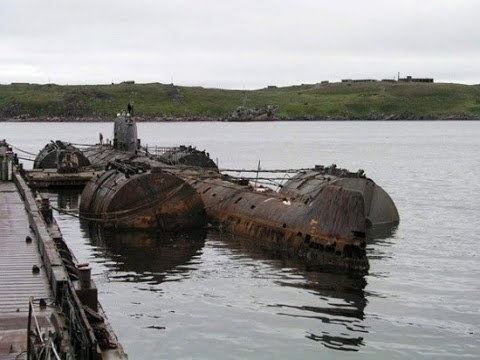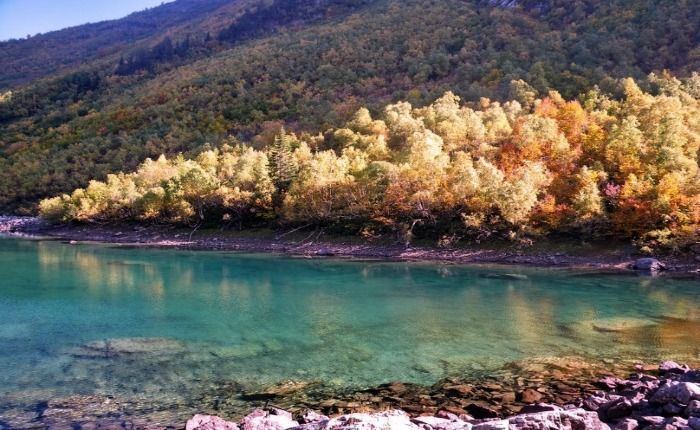 | ||
Similar Boiling Lake, Citarum River, Lake Kivu, Grüner See, Sellafield | ||
Russia s lake karachay the most contaminated place on earth
Lake Karachay (Russian: Карача́й), sometimes spelled Karachai or Karachaj, is a small lake in the southern Ural mountains in central Russia. Starting in 1951, the Soviet Union used Karachay as a dumping site for radioactive waste from Mayak, the nearby nuclear waste storage and reprocessing facility, located near the town of Ozyorsk (then called Chelyabinsk-40).
Contents
- Russia s lake karachay the most contaminated place on earth
- Map of Lake Karachay Ozersk Chelyabinsk Oblast Russia 456885
- Current status
- History
- References
Map of Lake Karachay, Ozersk, Chelyabinsk Oblast, Russia, 456885
Current status
According to a report by the Washington, D.C.-based Worldwatch Institute on nuclear waste, Karachay is the most polluted place on Earth. The lake accumulated some 4.44 exabecquerels (EBq) of radioactivity over less than 1 square mile of water, including 3.6 EBq of caesium-137 and 0.74 EBq of strontium-90. For comparison, the Chernobyl disaster released from 5 to 12 EBq of radioactivity over thousands of square miles. The sediment of the lake bed is estimated to be composed almost entirely of high level radioactive waste deposits to a depth of roughly 11 feet (3.4 m).
The radiation level in the region near where radioactive effluent is discharged into the lake was 600 röntgens per hour (approximately 6 Sv/h) in 1990, according to the Washington, D.C.-based Natural Resources Defense Council, sufficient to give a lethal dose to a human within an hour.
History

Built in total secrecy between 1945 and 1948, the Mayak plant was the first reactor used to create plutonium for the Soviet atomic bomb project. In accordance with Stalinist procedure and supervised by NKVD Chief Lavrenti Beria, it was the utmost priority to produce enough weapons-grade material to match the U.S. nuclear superiority following the atomic bombings of Hiroshima and Nagasaki. Little to no consideration was paid to worker safety or responsible disposal of waste materials, and the reactors all were optimized for plutonium production, producing many tons of contaminated materials and utilizing primitive open-cycle cooling systems which directly contaminated every gallon of the thousands of gallons of cooling water the reactors used every day.
Lake Kyzyltash was the largest natural lake capable of providing cooling water to the reactors; it was rapidly contaminated via the open-cycle system. Lake Karachay was even closer, however the lake was too small to provide sufficient cooling water. Lake Karachay was then designated a close-by and convenient dumping ground for large quantities of high level radioactive waste too "hot" to store in the facility's underground storage vats. The original plan was to use the lake to store highly radioactive material until it could be returned to the Mayak facility's underground concrete storage vats, but this proved impossible due to the lethal levels of radioactivity. The lake was used for this purpose until the Kyshtym Disaster in 1957, in which the underground vats exploded due to a faulty cooling system. This incident caused widespread contamination of the entire Mayak area (as well as a large swath of territory to the northeast). This led to greater caution among the administration, fearing international attention, and caused the dumping grounds to be spread out over a variety of areas (including several lakes and the Techa River, along which many villages lay).
In the 1960s, the lake began to dry out; its area dropped from 0.5 km2 in 1951 to 0.15 km2 by the end of 1993. In 1968, following a drought in the region, the wind carried 185 PBq (5 MCi) of radioactive dust away from the dried area of the lake, irradiating half a million people.
Between 1978 and 1986, the lake was filled with almost 10,000 hollow concrete blocks to prevent sediments from shifting.
In some recent satellite images, the lake appears to have been completely filled in, with no visible water remaining.
